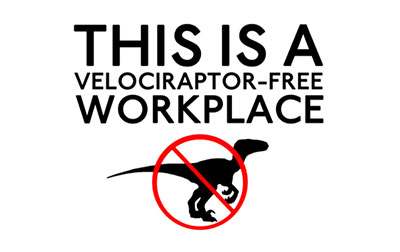Necessity of fire risk assessment for industrial application

This calls to mind the well-known quote from Dr. Ian Malcolm in the 1993 film Jurassic Park: “Your scientists were so preoccupied with whether or not they could, they didn’t stop to think if they should.” Similarly, if sufficient time is not allocated to thoroughly assess, define, and manage fire hazards and risks, the decision-making process—much like dealing with Velociraptors—can be influenced by external pressures such as budget constraints and project timelines. While these factors are crucial considerations during the value engineering phase, they should not dictate the risk analysis or scope definition process.
Fortunately, there are structured tools and methodologies designed to guide and streamline this process, balancing qualitative and quantitative measures to effectively manage potential risks. One such essential tool is a fire risk assessment, which ensures rational and informed decision-making to mitigate any metaphorical “Velociraptors” in fire safety planning.
What is a fire risk assessment?
A fire risk assessment is a structured process and systematic technique for examining processes, equipment, structures or buildings, and the use thereof, with the objective of identifying potential fire hazards. The identified hazards are analyzed on a qualitative and Quantitative basis using risk criteria to develop a specific risk rating for each hazard.
A fire risk assessment is a very powerful tool, which if used correctly, will ensure that all the available and relevant information is used and considered to quantify the risks and define the fire mitigation, detection, and protection scope. This tool is very versatile in that it can be used for existing or new facilities and equipment.
Why is a fire risk assessment necessary?
Various regulatory and non-regulatory stakeholders provide fire safety objectives that clients must comply with for legal and commercial reasons. These objectives prioritize property, operational, or life safety, or a combination of these elements. The objectives typically fall into three groups: building regulatory, other regulatory, and non-regulatory. The building regulatory fire safety objectives are set by national, provincial, and local legislation, and building codes. The other regulatory and non-regulatory fire safety objectives are typically outlined in the client’s own specifications and standards or by their risk insurers.
The challenge lies in a significant disparity: fire protection regulations are well-defined for the commercial sector but lack clarity for the industrial sector, which often involves specialized and complex applications. This creates a dilemma where clients must balance operational profitability and personnel safety while navigating unique risks without clear guidelines or sufficient regulatory frameworks. Drawing a parallel to Jurassic Park, it’s akin to having detailed structural design requirements for the Visitor Center based on established building codes, but finding no code section or occupancy classification that addresses the unique needs of a Velociraptor paddock.
The solution for special fire risks lies in the use of a fire risk assessment for the identification of the applicable hazards and analyzing these hazards to calculate specific risks to define a mitigation and protection scope. The defined scope of work aims to use the as low as reasonably practical (ALARP) principle for a solution that satisfies all the fire safety objectives from the relevant stakeholders.
Hatch’s approach to empowering clients to prevent and manage collateral damage from Velociraptor escape
At Hatch, our dedicated fire engineering team brings extensive experience and expertise across multiple industries and commodity sectors. What sets us apart is our reliance on a quantitative approach to analyze identified fire hazards. We achieve this by evaluating failure probabilities using data from equipment performance, industry standards, and historical failure records. This rigorous quantitative analysis forms the foundation of a baseline fire risk assessment document, which is then used collaboratively with the client and relevant subject matter experts in a complementary qualitative process to develop the optimal fire safety solution.
Hatch’s process ensures that the final fire risk assessment and fire protection scope are grounded in objective analysis while integrating the requirements of all relevant stakeholders in alignment with the ALARP principle.
This approach can be applied at various stages of project development and iteratively refined in subsequent phases. However, early engagement during the feasibility phase is strongly recommended to ensure that the approved fire protection scope is seamlessly integrated into the overall project design and development. This proactive strategy minimizes the need for reactive adjustments, saving the client time and costs during the design process and facilitating efficient execution planning.
This is how to actively go about identifying and addressing a Velociraptor-level risk to ensure the profitable and safe operation of any venture.
Contact us today to find out how this tool and our services can be implemented, for your new and existing projects, to help define and manage stalking Velociraptors.
